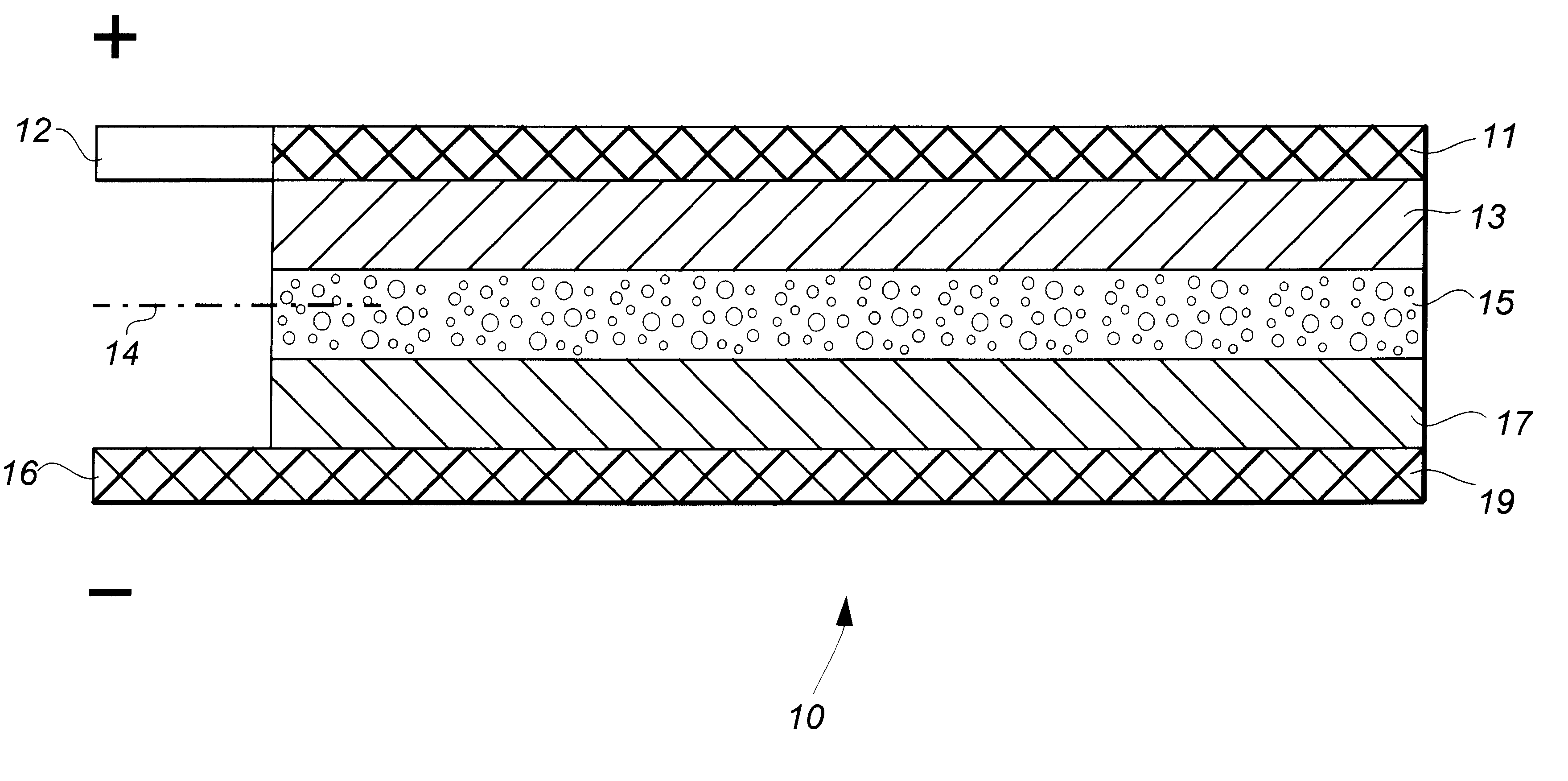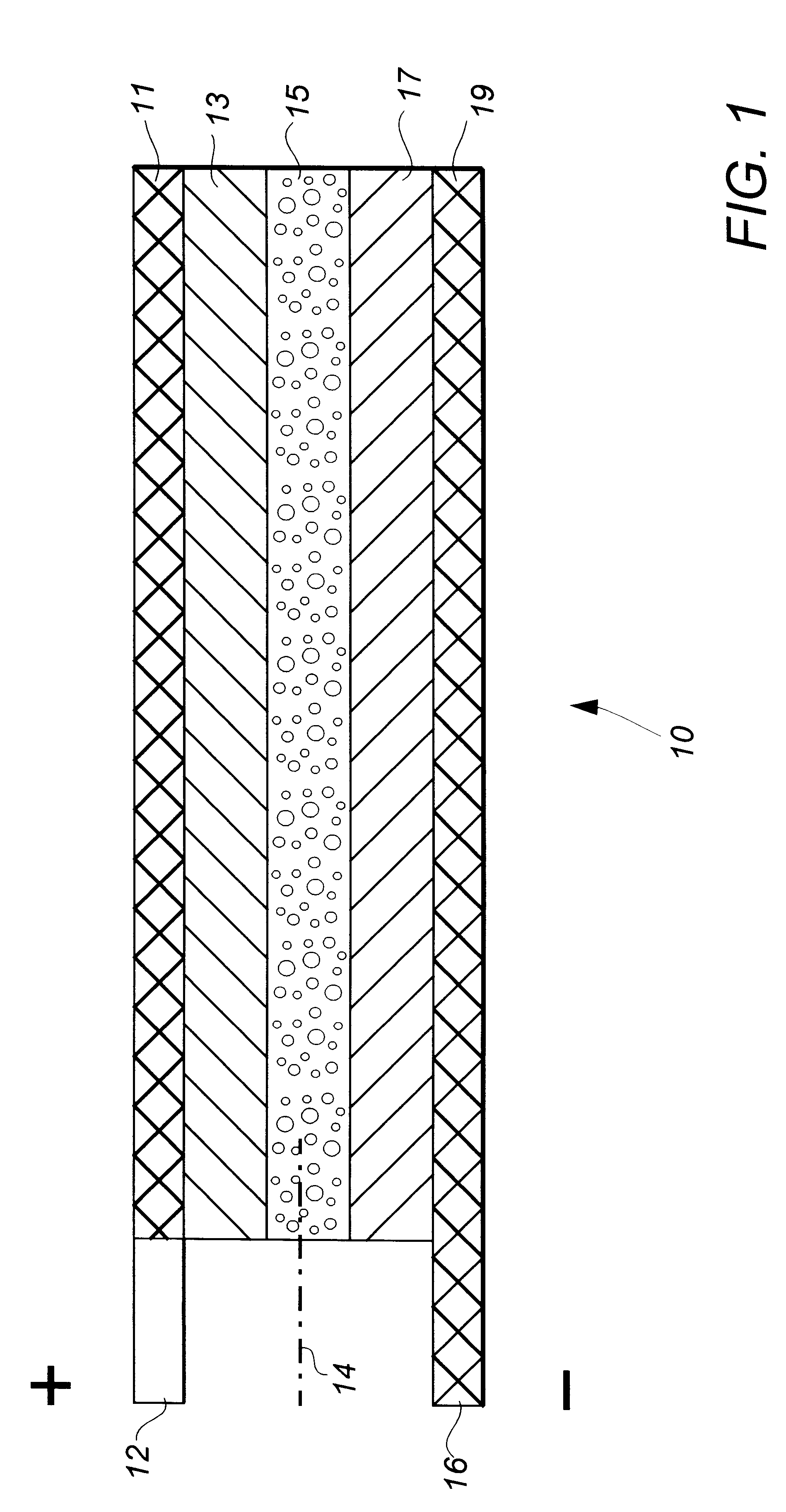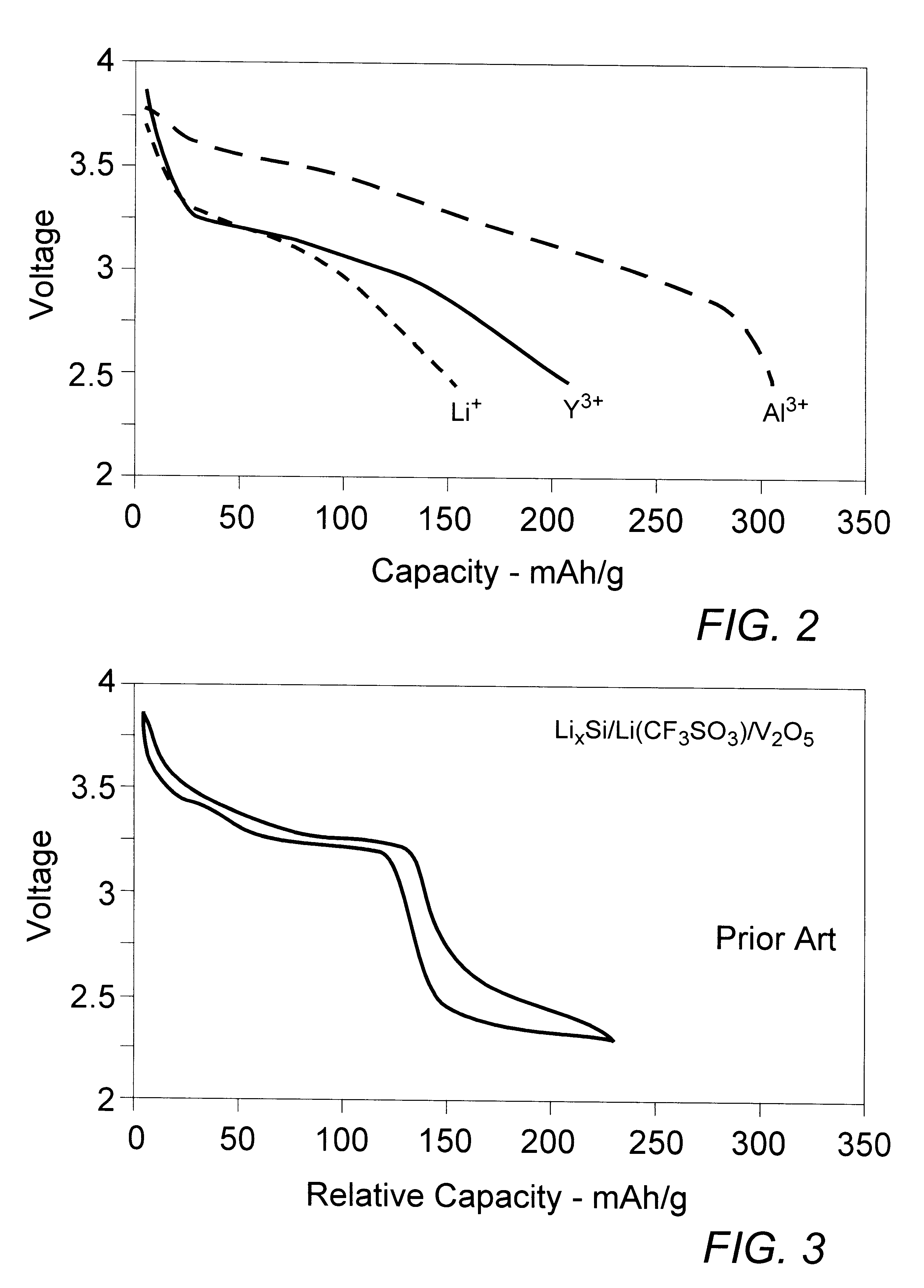Lithium-aluminum dual-cation rechargeable electrochemical battery cell
a rechargeable electrochemical battery and lithium-aluminum technology, applied in the direction of non-aqueous electrolyte cells, cell components, electrochemical generators, etc., can solve the problem that aluminum cannot be readily supported in the electrolytic plating process, and achieve the effect of low relative potential of the negative electrode and high cell operating voltag
- Summary
- Abstract
- Description
- Claims
- Application Information
AI Technical Summary
Benefits of technology
Problems solved by technology
Method used
Image
Examples
example i
A lithium intercalation test cell was fabricated as a comparative example of the operating voltage level and capacity achieved in a single monovalent cation battery cell typical of the prior art. A positive electrode was cast as a layer of a composition comprising 28 parts by weight of nano-sized (about 20-60 nm) V.sub.2 O.sub.5, 6 parts of conductive carbon black (MMM super P), 15 parts of poly(vinylidene fluoride-co-hexafluoropropylene) (Elf Atochem, Kynar 2801), and 23 parts of dibutyl phthalate plasticizer in 28 parts of acetone. The layer was dried at 22.degree. C. for about 0.5 hr to form a self-supporting membrane, and disks of 1 cm.sup.2 were cut from the membrane to provide electrode members comprising about 5 to 20 mg of active material, i.e., V.sub.2 O.sub.5. In order to prepare the cell for introduction of electrolyte in the manner of prior art laminated cell structures, the plasticizer was extracted from the electrode disk member with diethyl ether.
A negative electrode ...
example ii
A second comparative example of a dual cation battery cell comprising an alkaline earth metal polyvalent cation was prepared in the manner of Example I utilizing the V.sub.2 O.sub.5 positive and Li.sub.x Si negative electrode members of Example I. The electrolyte, however, was a 0.5 M solution of Y(ClO.sub.4).sub.3 in the 2:1 mixture of EC:DMC providing a source of polyvalent Y.sup.3 + cations. The cell was cycled in the manner of Example I and the recorded data, indicating the general dual cation improvement in first-discharge specific capacity to about 200 mAh / g, were plotted to yield the characteristic Y.sup.3+ trace depicted in FIG. 2
example iii
A battery cell embodying the present invention, i.e., comprising dual cations including at least one which is polyvalent Al.sup.3+, was prepared generally in the manner of Example II, comprising in the respective positive and negative electrodes materials capable of intercalating or adsorbing the polyvalent aluminum cation during the discharge cycle segment and of reducing, plating, or alloying with the smaller and more reactive second cation, typically of a monovalent alkali, during the charging cycle segment. In combination with such electrode materials, the electrolyte provides the polyvalent aluminum cation and is capable of readily receiving into the electrolyte solution the second cation species.
Specifically, the positive electrode member of this dual cation cell comprised the V.sub.2 O.sub.5 nano-material of Example I and the negative electrode member comprised the Li.sub.x Si of that example. Thus, although the active electrode materials of the cell may serve equally as well...
PUM
 Login to View More
Login to View More Abstract
Description
Claims
Application Information
 Login to View More
Login to View More - R&D
- Intellectual Property
- Life Sciences
- Materials
- Tech Scout
- Unparalleled Data Quality
- Higher Quality Content
- 60% Fewer Hallucinations
Browse by: Latest US Patents, China's latest patents, Technical Efficacy Thesaurus, Application Domain, Technology Topic, Popular Technical Reports.
© 2025 PatSnap. All rights reserved.Legal|Privacy policy|Modern Slavery Act Transparency Statement|Sitemap|About US| Contact US: help@patsnap.com



